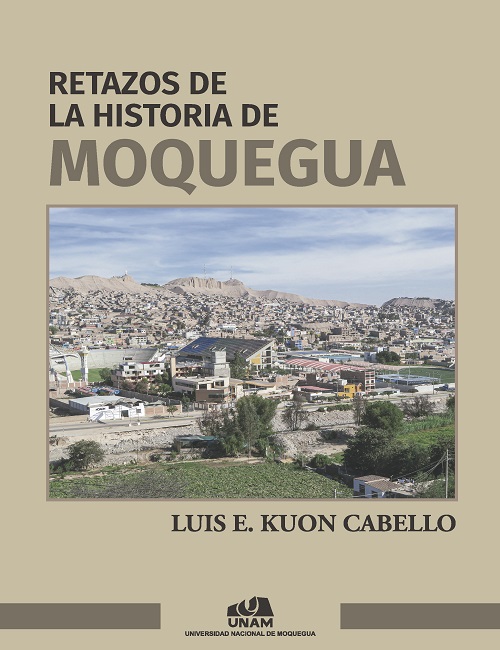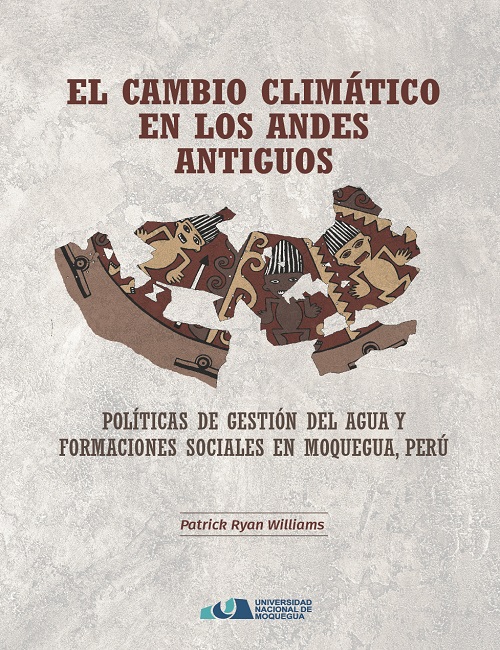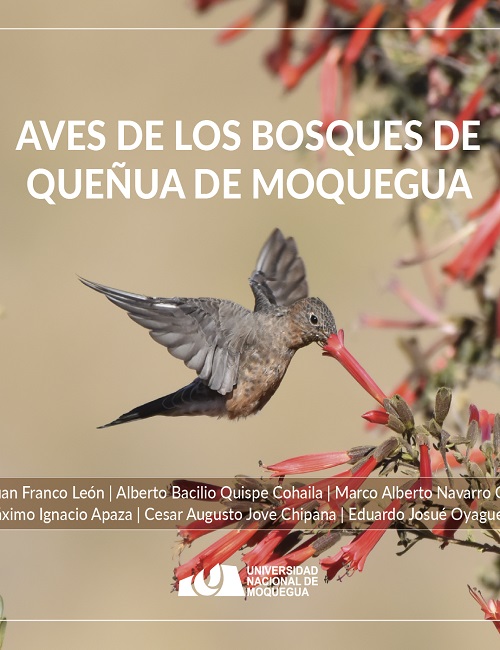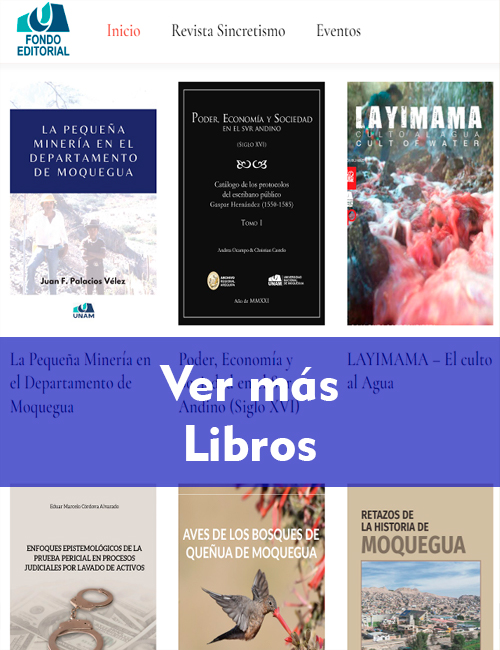Repositorio Institucional Digital UNAM
Bienvenidos al nuevo Repositorio Institucional Digital de la UNAM, cuyo objetivo es facilitar y mejorar la visibilidad de la producción científica y académica de la Universidad permitiendo el acceso abierto a sus contenidos y garantizando la preservación y conservación de dicha producción, además de aumentar el impacto del legado Institucional.

Comunidades de la UNAM
Seleccione una comunidad para explorar sus colecciones.
- Estudian el comportamiento del hombre en la sociedad y sus formas de organización.
- Área de Biomédicas.
- Es el estudio y aplicación de las distintas ramas de la tecnología.
- Publicaciones
- En esta comunidad estará publicada toda la producción científica de la comunidad universitaria.
Envíos recientes
Efecto de la poliacrilamida entrecruzada a base de potasio y amonio en el desarrollo de las especies forestales caesalpinia spinosa y schinus molle para la mitigación frente al cambio climático en la región Moquegua-2020.
(Universidad Nacional de Moquegua, 2022-11-18) Fuentes Flores, Grecia Dayana; Flores Quispe, Eduardo Luis
El objetivo del presente trabajo de investigación fue determinar el efecto de la poliacrilamida entrecruzada a base de potasio y amonio en el desarrollo de las especies forestales Caesalpinia spinosa y Schinus molle para la mitigación frente al cambio climático en la región Moquegua-2020. Se realizó en el Vivero Municipal Provincial, durante los meses de octubre del 2020 a marzo 2021. La metodología es tipo cuantitativo, explicativa, con el diseño experimental completamente al azar (DCA), con un arreglo factorial compuesto por el factor 1: especies forestales E1 (Caesalpinia spinosa) y E2 (Schinus molle) y el Factor 2: las dosis de hidrogel en 4 niveles D1 (0 g), D2 (2 g), D3 (4 g) y D4 (6 g), se realizaron 3 repeticiones con 6 plántulas cada uno, haciendo un total de 144 unidades experimentales en total. Se realizaron cinco evaluaciones para las variables altura de planta y diámetro de tallo, cada 30 días. Los resultados nos muestran que la poliacrilamida tiene efectos significativos en el crecimiento de tara y molle. En los tratamientos aplicados, los mejores resultados para altura de planta, se dieron con la dosis 4 diferente significativamente de las demás con una altura de planta promedio de 42.91 cm. Para diámetro de tallo (cm) el mejor resultado se obtuvo con la dosis 4 con un diámetro promedio de tallo de 0.635 cm con diferencia significativa de las demás dosis. La medición de la biomasa se realizó al final del experimento, para la variable porcentaje de materia seca de raíz con 43.35% para la dosis2 y la parte aérea con 34.44% para el testigo, los resultados de las dosis de hidrogel fueron estadísticamente no significativos para la biomasa.
Algoritmo hash de percepción para detectar imágenes mixtificados en entorno a la pericia de la imagen digital, provincia de surquillo, región Lima, año 2020.
(Universidad Nacional de Moquegua, 2023-12-21) Hancco Morocco, Reynaldo; Zuñiga Incalla, alex Peter
El aumento de la adulteración de las imágenes digitales por diferentes programas informáticos como Photoshop es un problema que afecta en estos tiempos a la sociedad, no obstante, existe una carencia de mecanismos para detectar estas alteraciones en las imágenes digitales. La presente investigación tiene como objetivo determinar el aporte del algoritmo hash de percepción en la detección de imágenes mixtificados en entorno a la pericia de la imagen digital. En la primera etapa se procedió a la obtención de 300 imágenes adquiridas de la Policía Nacional del Perú (PNP). En la segunda etapa se realizó el pre-procesamiento de imágenes con consiste en transformaciones geométricas, desenfoque de imágenes y compresión de imágenes, seguidamente extraemos las características de la imágenes con los diferentes algoritmos de hash de percepción implementados, luego comparamos la taza de detección de los diferentes algoritmos de hash de percepción, en esta investigación se propone el modelo VGG – 16 para extraer las características de la imagen para luego convertir en una cadena de hash con una función convertimos el vector de características de números flotantes en un hash binario; los números en coma flotante se convierten asignando 1 si el valor es mayor a la medida del vector y asignando 0 si el valor es menor o igual a la media. En la tercera etapa se utilizó las métricas para ver el aporte de los algoritmos hash percepción en la detección de imágenes mixtificados.
Calidad de servicio y satisfacción de los usuarios en consultas externas del hospital regional de Moquegua, provincia mariscal nieto, departamento de Moquegua, 2023.
(Universidad Nacional de Moquegua, 2024-05-02) Vega Velasquez, Naydu Claudia; Mamani Mamani, Oscar Iván
El trabajo de investigación, surge de la necesidad de saber y determinar en qué medida se relacionan las variables de calidad de servicio y la satisfacción de los usuarios en consultas externas del Hospital Regional de Moquegua, provincia Mariscal Nieto, departamento de Moquegua, 2023. El estudio corresponde al tipo de investigación básica, donde representa un enfoque cuantitativo, utilizando la técnica de la encuesta y como instrumento el cuestionario, considerada como una investigación descriptiva-correlacional, el diseño de investigación fue no experimental con corte transversal. La investigación se tomó como muestra a 366 usuarios correspondientes a todos los servicios de consultas externas, concurridas por los usuarios mayores de 18 años en el Hospital Regional de Moquegua. Mediante el programa estadístico SPSS versión 26, se obtuvo como resultado principal un p-valor=0,000 y un grado de correlación de Rho Spearman 0,851, que considera una relación positiva considerable. Se concluye en cuanto a los resultados demostrar el grado de relación que existe entre las variables de estudio, es decir, mejor calidad de servicio mayor es la satisfacción de los usuarios en los servicios de consultas externas del Hospital Regional de Moquegua.
Purificación de polifenoles obtenidos del extracto de orujo de uva mediante uso de resina macroporosa.
(Universidad Nacional de Moquegua, 2023-08-31) Torres Ramírez, Karol Cecilia; Allcca Alca, Erik Edwin
La región de Moquegua, situada en el sur de Perú, es conocida por su industria vitivinícola. Durante la fermentación alcohólica de la uva, se generan residuos conocidos como orujo de uva, cuya disposición inadecuada puede acidificar y contaminar el suelo. Este residuo, sin embargo, puede ser revalorizado mediante la extracción de polifenoles. Aunque existen varios métodos de extracción, muchos de ellos también extraen compuestos no deseados como metanol y azúcares reductores. La presente tesis propone el uso de la resina macroporosa Diaion HP-20 para purificar estos extractos, recuperando polifenoles y reduciendo los compuestos no deseados. En la presente investigación, se evaluo el efecto del co-solvente y eluyente usando un diseño completamente al azar con arreglo factorial. Los factores analizados incluyeron la concentración de co-solvente (0, 15, y 30%) y eluyente (50, 70, y 90%), garantizando una confiabilidad del 95%. Las pruebas se realizaron en una columna cromatográfica conectada a una bomba peristáltica que mantenía un flujo constante de 5 mL/min. Los resultados indicaron que el mejor rendimiento en la purificación de polifenoles totales se obtuvo con un co-solvente del 15% y un eluyente del 90%, alcanzando 181.82 mg GAE/gss. Además, en las pruebas de capacidad antioxidante, usando DPPH y ORAC, las mejores condiciones fueron un co-solvente del 30% y un eluyente del 90%, con resultados de 2.43 IC50 y 233.02 µM TE/gss. Asimismo, se observó que la resina Diaion HP-20 redujo a niveles no detectables los azúcares reductores como la fructosa y la glucosa. Por tanto, este proceso de purificación se presenta como una alternativa efectiva tanto para la recuperación de polifenoles como para la reducción de impurezas no deseadas.
Optimización de un planeamiento de minado en base a las características geotécnicas mediante el análisis exploratorio de datos en una unidad minera superficial no metálica en Moquegua
(Universidad Nacional de Moquegua, 2023-12-27) Yujra Maquera, Yene; Barriga Paria, Christ Jesus
La importancia de la planificación en la explotación en la minería superficial es de gran relevancia para el estudio de factibilidad y análisis económico en la minería superficial, por ello el objetivo de este estudio es optimizar el planeamiento de la unidad minera Solange AR mediante el uso del análisis exploratorio de dato de las características geotecnias. Se utilizó como base la información, correspondiente productividad, equipos, tiempos, ratios de explotación, etc. El análisis exploratorio de datos propone predecir escenarios con base en las relaciones de los valores analizados, en el presente proyecto se utilizó desde los indicadores de productividad hasta los resultados de los ensayos geotécnicos obtenidos de las calicatas. Para evaluación de los proyectos propone una simulación mediante el software Mineplan para realizar el modelo de bloques y posterío el cálculo de reservas. La Cantera Solange AR cuenta con un total de 89194858 toneladas de las cuales las reservas probadas son 28308092 toneladas y probables son 60886766 toneladas, el estudio se realizó y se clasificó de acuerdo a la granulometría obtenida mediante los ensayos geogénicos realizados por medio de calicatas en los diversos puntos del Tajo 2. Los resultados reflejan la rentabilidad de la explotación del Tajo 2 con y un VAN 8981042.39 U.S.$ en una producción de 8 años, el TIR como resultado de un 24% en el proyecto, en el primer año se tendrá el retorno de la inversión inicial playback. Para el diseño de construcción de rampas y accesos se tuvieron en cuenta las el año de los volquetes más el ancho de berma con un total de 10.5 metros, la pendiente máxima permisible de inclinación de 11° en el caso de las curvas se considera una inclinación del 3%. La explotación del tajo dará inicio el 16 de febrero del 2024 y terminará 24 de diciembre del año 2032, un total de 8 años con nueve meses y 8 días. Los rendimientos utilizados para el planeamiento fueron de acuerdo al resultado obtenido en el análisis de los datos de meses pasados.
El presupuesto participativo y la satisfacción de la sociedad civil organizada en el Gobierno Regional de Moquegua, período: 2019 – 2021.
(Universidad Nacional de Moquegua, 2024-04-11) Miranda Ascencio, Eloy Ever; Machicado Lea, Germán Wilber
El presente trabajo de investigación se planteó como objetivo general determinar la relación que existe entre el presupuesto participativo y la satisfacción según percepción de la sociedad civil organizada en el Gobierno Regional de Moquegua, período: 2019 – 2021. La investigación presentó una metodología de tipo básica, diseño no experimental, y nivel correlacional. La muestra estuvo conformada por 36 representantes de la sociedad civil organizada. Los instrumentos de recolección de datos fueron el cuestionario y la guía de análisis documental, los cuales están validados por el juicio de tres expertos y tuvieron un coeficiente de confiabilidad según alfa de Cronbach de 0,980 para la variable presupuesto participativo y 0,974 para la variable satisfacción. Para el procesamiento de datos recolectados se utilizó los programas IBM SPSS Statistics 23 y Ms Excel 365. Luego, el análisis correlacional tuvo como resultado un nivel de significancia de 0,000 < 0,05 y una correlación positiva media de 0,671 según Rho de Spearman entre las variables presupuesto participativo y satisfacción de la sociedad civil organizada, por tanto, se dio por aceptada la hipótesis planteada. Este resultado significa que, si se realiza el presupuesto participativo regional eficazmente al 100 %, la satisfacción de la sociedad civil organizada también se incrementará en un 67,1 %. Se concluye que existe el descontento, desinterés e insatisfacción de la sociedad civil por la falta de impulso, empoderamiento, socialización y participación en el desarrollo del presupuesto participativo en el Gobierno Regional de Moquegua, y la necesidad de redoblar los esfuerzos para alcanzar la satisfacción efectiva.
Percepción sobre gestión del conocimiento y la productividad laboral en el personal administrativo de la dirección regional de energía y minas, Moquegua, 2021.
(Universidad Nacional de Moquegua, 2023-11-13) Carcausto Ccori, Reder Jorge; Herrera Córdova, Florencia Beatriz
La presente investigación titulada “Percepción sobre la gestión del conocimiento y la productividad laboral en el personal administrativo de la Dirección Regional de Energía y Minas, Moquegua, 2021” tuvo como objetivo principal: Determinar la relación que existe entre la Percepción sobre Gestión del Conocimiento y la Productividad Laboral en el Personal Administrativo de la Dirección Regional de Energía y Minas, Moquegua, 2021. La investigación presentó una metodología de tipo básica, con enfoque cuantitativo, nivel descriptivo correlacional. La población estuvo conformada por 28 trabajadores administrativos de la Dirección Regional de Energía y Minas, el instrumento aplicado fueron dos cuestionarios, ambos validados y con un Alpha de Cronbach de 0,937 y 0,867 lo cual fueron altamente confiables, Asimismo, se utilizó para el procesamiento y análisis de los datos, el software estadístico SPSS versión 24, para una correcta interpretación de los resultados, para la comprobación de hipótesis según los datos procesados y pruebas estadísticas empleadas, chi cuadrada de Pearson se obtuvo un 0,001 lo que significa que sí existe relación significativa entre ambas variables, es decir, a mejor gestión del conocimiento, mayor será la productividad laboral. Asimismo, se ha obtenido un p- valor = 0,000 menor que el 0,005 por lo que existe suficiente evidencia estadística para afirmar que la percepción de la gestión del conocimiento se relaciona significativamente con la productividad laboral en el personal administrativo de la Dirección Regional de Energía y Minas, 2021. Finalmente, se logró determinar que el 46,43 % de los trabajadores encuestados han percibido ocasionalmente una gestión del conocimiento para mejorar la productividad laboral en la institución, mientras que el 53,57% sostuvieron que raramente y/o nunca han percibido algún tipo de acción o momento dónde se haya resaltado las retroalimentaciones, fortalecimiento de capacidades, involucramiento, incentivos u otras actividades que fortalezcan su desempeño en la entidad en mención.
Nivel de cumplimiento de las recomendaciones de los informes de control posterior en el gobierno regional de Moquegua 2018-2021.
(Universidad Nacional de Moquegua, 2023-10-06) García Alberto, Alissa Mónica; Marca Maquera, Hugo Rubén
El presente trabajo de investigación titulado nivel de cumplimiento de las recomendaciones de los informes de control posterior en el Gobierno Regional de Moquegua 2018-2021, tuvo como objetivo describir el nivel de cumplimiento de las recomendaciones de los informes de control posterior efectuados al Gobierno Regional de Moquegua y sus unidades ejecutoras durante los períodos 2018-2021. Por la naturaleza del trabajo de investigación no lleva una hipótesis, porque se trata de un estudio descriptivo. Para la recopilación de datos se utilizó el método del análisis documental con su instrumento “Guía de análisis Documental” que permitió revisar la información existente en la página web de los “Buscadores de los Informes de Servicios de Control” y “Acceso a informes de Control” y “Seguimiento de Recomendaciones” a cargo de la Contraloría General de la República. Respecto al enfoque de la investigación corresponde a una investigación cuantitativa, con un tipo de investigación básica, ya que tan solo se describió el nivel de implementación de los informes de control posterior e identificar su situación actual. El diseño de investigación es no experimental de corte transaccional. La población y muestra estuvo representado por 158 y 98 informes de control posterior respectivamente. El muestreo utilizado fue probabilístico, porque la población presenta diferencias significativas en sus subgrupos o estratos y según necesidad de la investigadora fue elegida. Dentro de los principales resultados se presentan que: de las 172 recomendaciones efectuadas, solo se implementaron 11, que equivale al 6.4%, en proceso se encuentran 10 recomendaciones que representa el 5.81%, 59 en estado “Pendiente” que representa el 34.31%, 17 en estado “inaplicable” que representa el 9.88% y 75 informes de control “No Se Implementó” representando el 43.60%, llegando a la conclusión que las implementaciones de recomendaciones son muy bajas.
Factores socioeconómicos que influyen en el no empadronamiento de las personas en situación de pobreza no registradas por la unidad local de empadronamiento del Sisfoh en el distrito de Samegua, 2021.
(Universidad Nacional de Moquegua, 2023-08-18) Cometivos Alvarado, Luis David; Córdova Alvarado, Eduar Marcelo
El presente trabajo de investigación tuvo como objetivo determinar los factores socioeconómicos que influyen en el no empadronamiento de las personas en situación de pobreza no registradas por la Unidad Local de Empadronamiento del SISFOH en el distrito de Samegua, 2021. La investigación es de tipo fenomenológico porque se ha realizado el estudio en su contexto natural de cada entrevistado y se ha podido interpretar el fenómeno acorde a la realidad que percibe cada individuo, es de diseño no experimental de enfoque cualitativo, teniendo dos unidades muestrales, la primera unidad de análisis son las personas que fueron beneficiarias con las canastas básicas familiar y como segunda unidad de análisis a los funcionarios de la Unidad Local de Empadronamiento de la Municipalidad Distrital de Samegua, de lo cual tuvo como instrumento de estudio la entrevista a profundidad que se desarrolló mediante una guía semiestructurada. La investigación tuvo como población a 319 beneficiarios de la canasta Básica familiar, y la muestra se desarrolló mediante el muestreo por cuota, siendo 18 beneficiarios de la canasta básica familiar y 2 profesionales de la Unidad Local de empadronamiento. Los resultados de la investigación mostraron que los factores socioeconómicos si influyen en el no empadronamiento de las personas en situación de pobreza, asimismo se tuvo como conclusión que el no empadronamiento es producto de la migración, estudios no concluidos, viviendas rusticas, escaso acceso de los servicios básicos, jornadas laborales mayor de 8 horas, falta de beneficios laborales y trabajos momentáneos. Asimismo, la deficiencia de presupuesto y recursos humanos por parte de la Unidad Local de Empadronamiento de la Municipalidad Distrital de Samegua y el déficit político de focalización que genera desconocimiento del SISFOH por parte de la población de Samegua.
Sentimiento de comunidad e integración social en inmigrantes venezolanos en la ciudad de Moquegua, Perú, 2020.
(Universidad Nacional de Moquegua, 2022-04-22) Paredes Choquehuanca, Gonzalo Willians; Córdova Alvarado, Eduar Marcelo
Esta investigación se planteó como objetivo determinar la relación entre el
sentimiento de comunidad y la integración social en los inmigrantes
venezolanos que residen la ciudad de Moquegua, Perú. Se tomó como
referencia el año 2020.
El estudio se aborda al amparo del enfoque cuantitativo y se tipifica
como investigación de tipo básico, de nivel relacional, con diseño
transversal. Se identificó como población un conjunto de inmigrantes de
origen venezolano con mayoría de edad, que radican en la ciudad de
Moquegua, y que llegaron a la ciudad desde el año 2018 o después. Y se
trabajó con una muestra de 240 inmigrantes, seleccionados por muestreo
intencional.
Para la recolección de datos, se utilizaron la Escala de Sentimiento de
Comunidad de Sánchez, que se basa en el modelo teórico de Sarason; y
la Escala de Integración Social, que es una adaptación de la Escala de
Anomia Social, de Li, Atteslander, Tanu y Wang. Para su uso en este
estudio, los instrumentos fueron validados mediante juicio de expertos; y
cuentan con confiabilidad bastante alta, superior a 0,9 en ambos casos.
Como conclusión general, se encontró una relación inversa entre el
sentimiento de comunidad y la integración social en inmigrantes
venezolanos en la ciudad de Moquegua, Perú, 2020, la que se verifica en
una correlación negativa moderada y altamente significativa (rho = -
0,651**) entre las puntuaciones de la variables sentimiento de comunidad
e integración social







